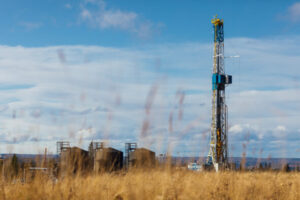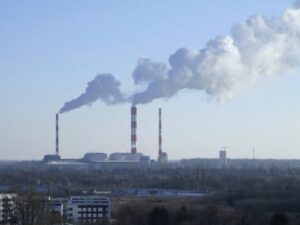While anticipating EU proposals to reduce methane emissions, it is in the interest of the gas sector to take appropriate steps as soon as possible to improve the quality of emissions measurements and to prepare action plans to reduce methane emissions – writes Maria Olczak, Research Associate at Florence School of Regulation.
Until now, the EU’s climate and energy policy has been mainly focused on reducing carbon dioxide (CO2) emissions. However, achieving the goal of climate neutrality will require reducing all greenhouse gas emissions, including methane. The European Green Deal leaves no doubt in this respect and assumes that the Commission, chaired by Ursula von der Leyen, will address the issue of methane emissions from the energy sector.
Methane is the second most important greenhouse gas, which in the short term is over 80 times more harmful than carbon dioxide. Methane emissions accounted for around 10% of all greenhouse gases emitted in the EU in 2017, and their main sources were agriculture, the waste sector and the production and transport of fossil fuels – oil, coal and natural gas.
The issue of natural gas, whose methane is the main component is particularly sensitive. Methane emissions associated with the extraction and transport of this fuel call the role of gas as a low-carbon alternative to oil or coal into question, which is important in the context of energy transformation. The EC’s proposals, expected this year, may affect the largest exporters of blue fuel to the EU.
EU methane strategy
The European Commission is preparing an EU Strategic Plan for methane. Article 16 of the Regulation on the management of the energy union calls on the EC to prepare such a strategy which is to take into account „assumptions about the circular economy” and ultimately become part of the long-term EU climate strategy.
A consortium of four companies selected by the Commission (Wood, TNO, Carbon Limits, The Sniffers) is preparing a special report constituting an important reference point for further work of the EC. The final version of the report is expected in August this year.
According to current information, the Commission intends to present its proposals in the form of a legally non-binding communication in the first or second quarter of 2020. It is already seeking support for a new strategy among EU Member States. In this context, Germany is very important, as it will take over the Presidency of the Council of the European Union on 1 July.
The communication, which outlines the EU strategy on methane, will form the basis for further legislative work of the EC. Legally binding proposals, in the form of new legislation or existing changes, are expected in the second half of this year. However, the final shape of EU regulations on methane will also depend on the position of the EU Council and the European Parliament, which on many occasions, including during the October debate on the list of Common Interest Projects, raised the issue of methane emissions as an argument for cessation of financing investment in gas infrastructure.
What will be included in the new strategy?
Unlike the first EU strategy on methane emissions published in the mid-1990s, and also covering agriculture and the waste sector, the new strategy will focus primarily on reducing emissions in the energy sector. This approach can be explained not only by the fact that agriculture is a sensitive area, but also by the fact that reducing emissions in the energy sector is relatively the cheapest way to reduce methane emissions. As it is a major component of natural gas, it is a loss to businesses when it leaks. However, until now, security issues have been the main motivation of companies to reduce methane leakage.
According to the International Energy Agency, existing technologies allow to reduce about 75 percent of emissions in the oil and gas sector, half of which would not lead to additional costs for companies, as the investment cost would be offset by profits from the sale of „recovered” fuel.
On the other hand, the uncertainty regarding the measurement of greenhouse gas emissions is an important obstacle in taking effective measures to reduce methane. Many countries report their emissions solely on the basis of calculations that use outdated emission factors and activity levels.
Internal and external dimensions of the strategy
In the internal dimension, the EC’s goal is to improve the quality of data provided by Member States, which form the basis of the EU list of greenhouse gases reported annually to the Secretariat of the Climate Convention (UNFCCC). The Commission plans to encourage Member States to estimate their emissions in line with Tier 3 methodology of the Intergovernmental Panel on Climate Change (IPCC) instead of Tier 1 or Tier 2, as is currently the case. Level 3 is more complex and requires more data, but allows more accurate estimation of emissions.
To this end, the EC could impose an obligation on transmission system operators, storage system, LNG terminals as well as distribution system to report its emissions annually according to the adopted methodology. The measurements could be accompanied by the obligation to present an action plan to reduce methane emissions, and regulators should recognize the costs incurred by regulated entities. Such an idea appeared in the report of consultations conducted by the Agency for the Cooperation of Energy Regulators (ACER), and a similar solution works in some countries.
One of the potential possibilities is also the extension of the existing EU emissions trading system to include methane emissions from the natural gas sector and methane from coal seams or the use of infrastructure policy tools by introducing additional criteria for cost-benefit analysis prior to making decisions on new infrastructure investments and their financing. At the last meeting in the European Parliament, Kadri Simson – Commissioner for Energy, announced that the updated sustainability criteria would be presented by the end of 2020.
However, the need to reduce emissions associated with natural gas imports is the most important challenge. In 2018, the vast majority of gas used by EU consumers (77.9 per cent) came from outside the Union, mainly from Russia, Norway, Algeria, also LNG from Qatar or the United States. This number may increase in the future, mainly due to the decreasing gas production in the EU itself.
Much is said about the creation of a „methane supply index” that would allow some form of differentiation of gas supply from methane emissions, but it is difficult to imagine using such a mechanism as an instrument having a real impact on trade with third countries.
The Commission also plans to intensify bilateral cooperation with other key gas importers such as Japan and South Korea and multilateral cooperation under existing initiatives such as Climate and Clean Air Coallition and Oil and Gas Methane Partnership.
What does this mean for Poland?
As far as methane emissions in the energy sector are concerned, from the Polish perspective, two areas are key – emissions related to the extraction of solid fuels and those in the oil and natural gas sector. Poland was the largest emitter of methane from coal mining, in 2017 more than half (54 percent) of this greenhouse gas emission came from mines operating in Poland.
While the value of leaking methane related to coal mining in Poland is small, the value associated with the extraction, processing and transport of crude oil and natural gas is growing. Between 2016 and 2017, emissions in these sectors increased by 1 and 3 percent, respectively, and further increases can be expected due to the growing demand for these raw materials and domestic gas extraction. Emissions from the natural gas sector in Poland account for only 5 percent of EU emissions, which is the same as in France and four times less than in Germany and Italy.
Due to the growing role of gas from renewable sources, it is worth ensuring that the production of biogas and biomethane in Poland takes place according to appropriate standards so as to minimize methane emissions, e.g. from the storage of organic waste. Emissions are being measured in countries like Denmark and Sweden, and biogas producers report the results, but for now on a voluntary basis.
Anticipating the EU proposals to reduce methane emissions, it is in the interest of the gas sector to take appropriate measures as soon as possible to improve the quality of emissions measurements and to prepare action plans to reduce methane emissions. Only zero tolerance for this issue can form the basis of an effective business model in the medium term.








